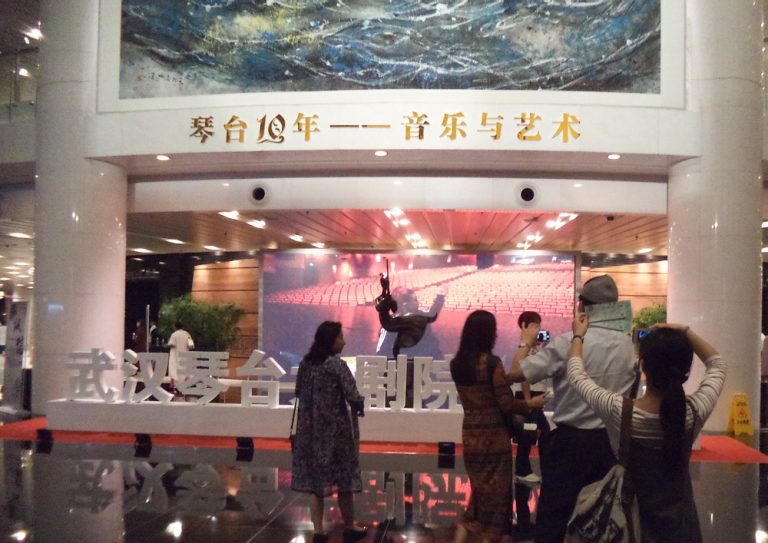
Qintai 9/23: Being an Onlooker of Dream of the Red Chamber
By TAN SHUO October 5, 2017
Jingfu Shi took a sip from her cup. “I’m under the gun,” she sighed.
Shi was also among the ones who shed the most tears after the performance of Dream of the Red Chamber on September 23.
The gun, she mentioned, was not the opera she had assisted in directing, but the live TV broadcast.
“It is uneditable. What if something wrong in the performance or in the transmission? All of these create stress,” said a manager of Wuhan Qintai Grand Theater on the condition of anonymity, who admitted that live broadcasting was daunting to them, too. Yet the opera was, as he described, “the biggest project in history”1, so the last show “shall be felt by the Wuhan people, even if they feel it at home in front of the TV screens.”
The theatre house, therefore, was fixed with broadcast cameras and the camera operators from Wuhan TV Station stood by on their headphones even two hours before the performance. Such scene to me was a visualization of the pressure, which finally drove me from the seating area to the wing space of the backstage. While being an onlooker there gave me a chance to view differently.
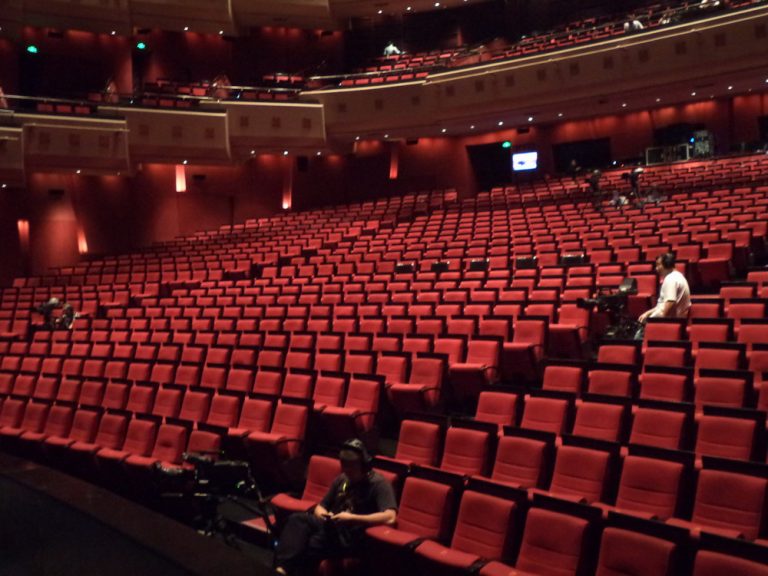
The tour of Dream of the Red Chamber in China involved nearly 300 people from more than 10 countries and regions, covering a distance of over 2,000 kilometers in about six weeks with four city stops.
These eye-catching numbers had been kept in my mind since I joined the team in mid-August as a tour publicist. While on my first day, after experiencing 11 painful hours in the airport to meet up with eight people landed by six different flights, I started to behold the numbers with awe, for what behind were awesome efforts in operations.
“Welcome to my dream!”
The solemn voice of Monk shifted my attention to the stage. Followed was a striking overture by the Chorus of the State Opera of Dnipro. Bright Sheng, the composer, co-librettist, and conductor of the tour, once highly praised the Ukrainian chorus during the rehearsal weeks in Tangshan. While, sometimes their limited English was a barrier to the collaboration across teams. “(The chorus has) Too many people. We were short-handed and unable to serve each of them personally,” said a dresser, who remembered that at the beginning of the tour many choral singers were too afraid to be late for the entrance and reluctant to change the pieces they thought unnecessary. “Later we succeeded in talking with them one by one, telling them no need to be hurry and time was enough. So, it is a matter of communication,” she concluded.
Communication, a word commonly heard in the course of the tour, was indeed a good means to guarantee the results. Without sufficient communications, the American opera may not have been possible to be realized in China by a group of artists from China, America, Germany, France, Australia, Thailand, Israel, Ukraine as well as Taiwan and Hong Kong regions, plus a German production director and supervisor and Taiwanese professionals in charge of the main departments.
If the dress rehearsal in Tangshan was counted, the opera had actually been staged at four different venues in four cities (Tangshan Grand Theatre, Beijing Poly Theatre, Changsha Meixihu International Culture & Arts Centre and Wuhan Qintai Grand Theatre) within a month. One thing worth mentioning is that it was the first time in Mainland China — not only the work itself but also the first revival of an American opera in China by a team which is largely different from its original one, and what made it more significant — a tour. Bright Sheng adopted the words such as “utmost efforts”, “in Chinese history” and “miracle” in his thank-you note to the co-production companies (Beijing Poly Theatre Management and Armstrong Music & Arts), which was little overstating in regard to the opera production.
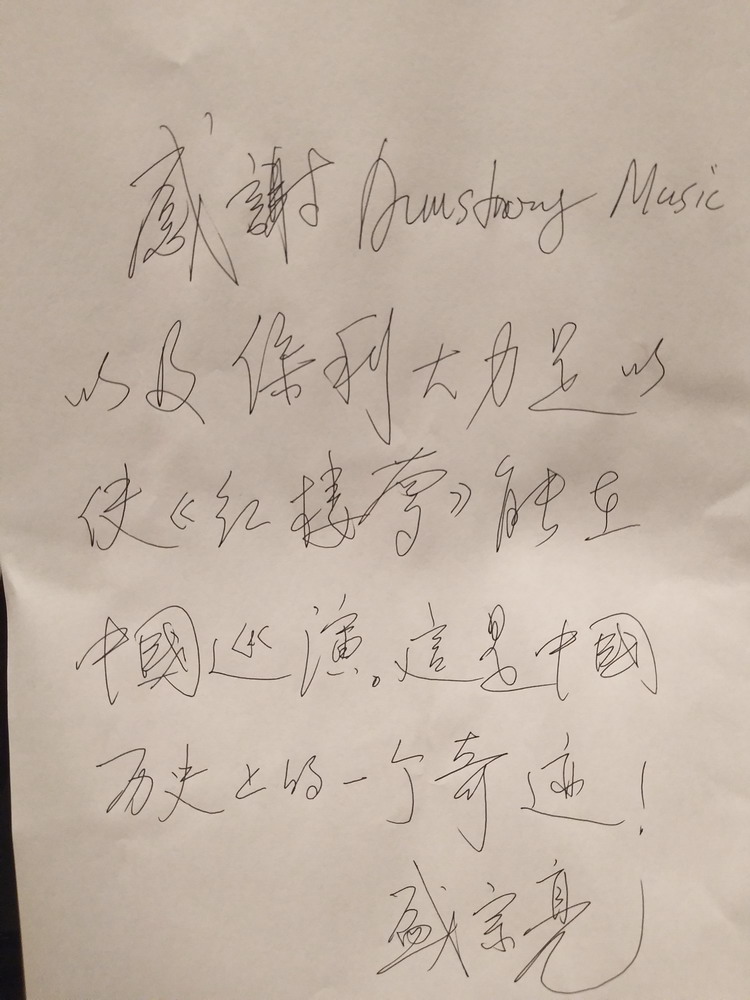
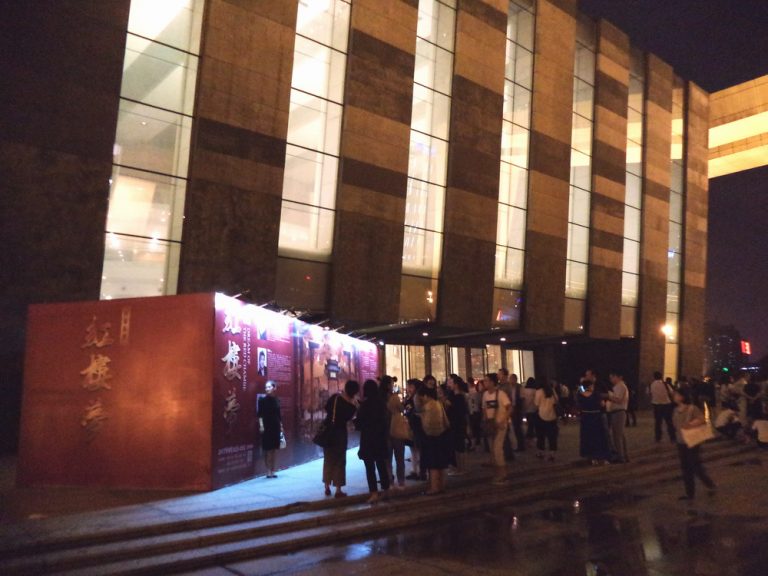
“Lu-lumn, lu-lumn…”
It was the bamboo forest. I watched myself so as not to stand in the way of the set change.
The bamboo forest was used in both acts. Like other sets, it was designed and built by the San Francisco Opera for the world premiere last year. “The floors are more level in the theatres in America, so the set change can be hardly heard, but things are different in China,” explained a senior technician, who once proposed to replace the original wheels with shockproof ones. However, due to high cost and long hours it may incur, the proposal was not adopted. “So we made the wheels a bit higher,” he said, “in order to avoid possible friction between the bottom surface of the set and the floors, and hence reduce the sound as well as the wear and tear.”
Since stagehands working on the tour were all local hiring, the technical team had to repeat the training session and rebuild workplace relationships at each different theatre and — it took patience. So many marks in different colors were spotted on the floorcloth, how to recognize them and move the set exactly to its marked place at the short break of the music was no easy, let alone in the dark. Scene change was still rehearsed for two hours in the afternoon on September 23, mainly for the newly-trained crews.
The orchestra may be seen as local hiring, too, for the Hangzhou Philharmonic only joined the performances in Beijing and it was the Wuhan Philharmonic that played in the other two cities. Changing the orchestra and shaping the music again made the tight schedule tighter. After all, including the time spent on transport, the preparation for staging the opera at a new house had to be done within five days.
“Lu-lumn, lu-lumn…” The bamboo forest was moved off stage.
Though the American-made set could only be accommodated to the stage conditions to some extent, to tailor the English lyrics for audiences was relatively easy. One notable example was the line “What is this?” in the wedding scene — when Bao Yu uncovered the veil of the bride, he saw the face of Bao Chai instead of his true love Dai Yu and the question was his first response. It should be rendered as an exclamation of shock and the moment was also one of the most dramatic turns of the opera. However, during the performances, “What is this?” always elicited laughter, which is probably because the question to Chinese as non-native English speakers is reminiscent of English classes in one’s childhood. The improper laughter, of course, disrupted the flow of understanding, so the line was removed from the lyrics and the surtitles, and since then on, the audiences did not burst out laughing anymore but remain absorbed till the last minute of the performance.
When the time came for curtain calls, everything seemed without surprise — the cast taking bows as they had rehearsed and receiving applauds as they hoped — till the two halves of the traveler curtain finally met in the middle. In that very second, a huge cheer erupted from the stage, which touchingly recapped of the tour of Dream of the Red Chamber in China and also touched me.
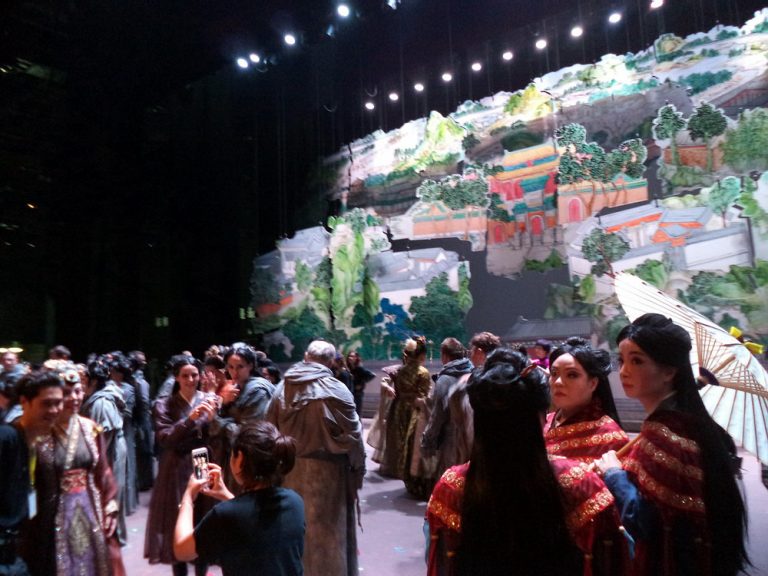
“It was my fault I wrote this damn thing,” Bright Sheng “confessed” to the team at the celebration party, “If I didn’t write this opera, we would not be here and work so hard.”
True, and if he had not written the opera, there would not have been the tour, nor the pressure, the difficulties and the challenges.
By far it is still uncertain when Dream of the Red Chamber or another independent revival will tour China again. While whenever it is, there would be more considerations about internal communication as well as the workload which may be caused by stage conditions, new stagehands, orchestra changing, lyrics tailoring, etc. There might also be optimization of the scenery installation, dismantlement and transportation, manpower distribution, operations management, etc. on tour in general. As for all the force majeure encountered, such as the overnight stopover happened to a direct flight, the restrictions on trucks for highway use, the red tape in visa extension for foreigners, the traffic congestion and identity inspection, even the development strategy of a city2 as well as the challenge of the contemporary music itself — are likely to be there still in the course of the next tour. Notwithstanding the reality, to take proactive measures and dismiss all the negatives, in a certain sense, is to safeguard the artistic value of the opera.
“If we do this again—” Bright Sheng raised his voice, “I want everybody to be back!”
A cheer erupted again, but this time, with tears in many’s eyes.
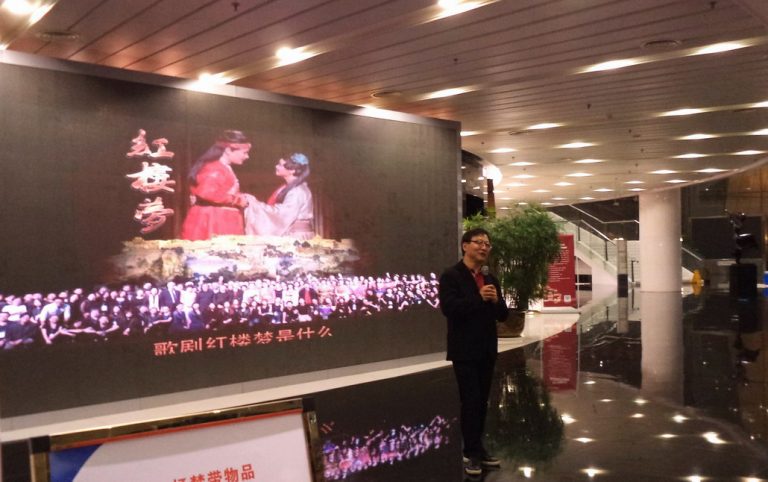
© TANTANYY
For Audiences, Artists, and Theatres
1. Dream of the Red Chamber is the biggest project for Wuhan Qintai Grand Theatre since its opening to the public in 2007.
2. As a major policy in the coordinated development of Beijing, Tianjin and Hebei Province, the noncapital functions of Beijing are shifted to the surrounding regions. Many clothing wholesale markets, therefore, have been closed or relocated, which brought troubles to the costume team of Dream of the Red Chamber when they were searching for an urgently needed textile fabric.